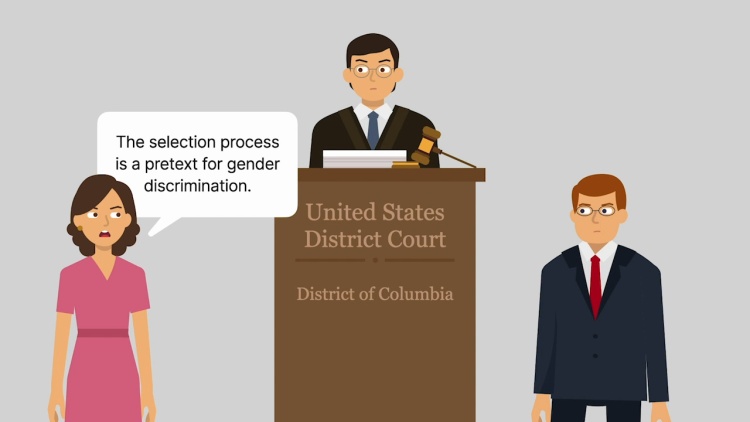Kolstad v. American Dental Association
United States Supreme Court
527 U.S. 526 (1999)
- Written by Nan Futrell, JD
Facts
Carole Kolstad (plaintiff) worked as director of federal agency relations for the American Dental Association (Association) (defendant). In September 1992, a position opened for a director of legislation and legislative policy. When Kolstad learned of the opening, she expressed interest in the vacant position. Tom Spangler, then serving as legislative counsel for the Association, also expressed interest in the opening. Kolstad and Spangler had both received excellent performance reviews from Leonard Wheat, head of the Association’s Washington office. Wheat asked Dr. William Allen, head of the Association’s Chicago office, to decide whether Kolstad or Spangler would receive the promotion. After interviewing Kolstad and Spangler, Allen selected Spangler in December 1992. Kolstad sued the Assocation under Title VII of the Civil Rights Act of 1964 (Title VII), 42 U.S.C. § 2000e, alleging unlawful gender discrimination. According to Kolstad, the selection process was rigged from the start in Spangler’s favor. Kolstad alleged that Allen’s stated reasons for promoting Spangler were mere pretext for underlying discrimination. Kolstad offered evidence that the job description was edited to essentially preselect Spangler, which Kolstad alleged showed an intent to discriminate. Kolstad also offered evidence that Wheat used sexually offensive and derogatory language toward women. A jury found that the Association discriminated against Kolstad and awarded her back pay in the amount of $52,718. However, the district court denied Kolstad’s request for a jury instruction on punitive damages. The court of appeals upheld the ruling on punitive damages, concluding that an instruction on punitive damages required evidence not just of intentional discrimination, but also of “egregious” employer conduct. Kolstad sought review by the United States Supreme Court, which was granted.
Rule of Law
Issue
Holding and Reasoning (O’Connor, J.)
What to do next…
Here's why 899,000 law students have relied on our case briefs:
- Written by law professors and practitioners, not other law students. 47,000 briefs, keyed to 994 casebooks. Top-notch customer support.
- The right amount of information, includes the facts, issues, rule of law, holding and reasoning, and any concurrences and dissents.
- Access in your classes, works on your mobile and tablet. Massive library of related video lessons and high quality multiple-choice questions.
- Easy to use, uniform format for every case brief. Written in plain English, not in legalese. Our briefs summarize and simplify; they don’t just repeat the court’s language.





